




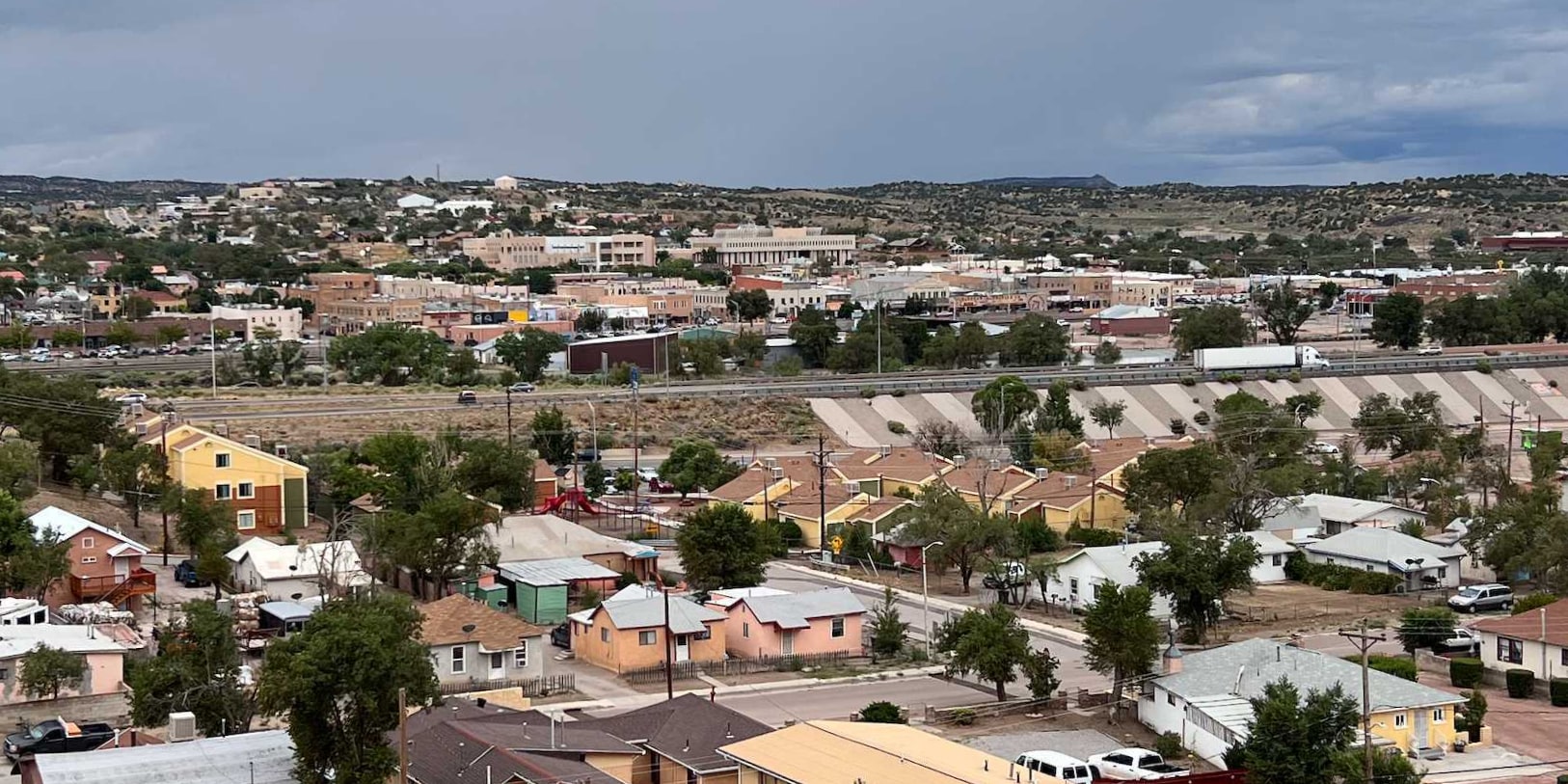




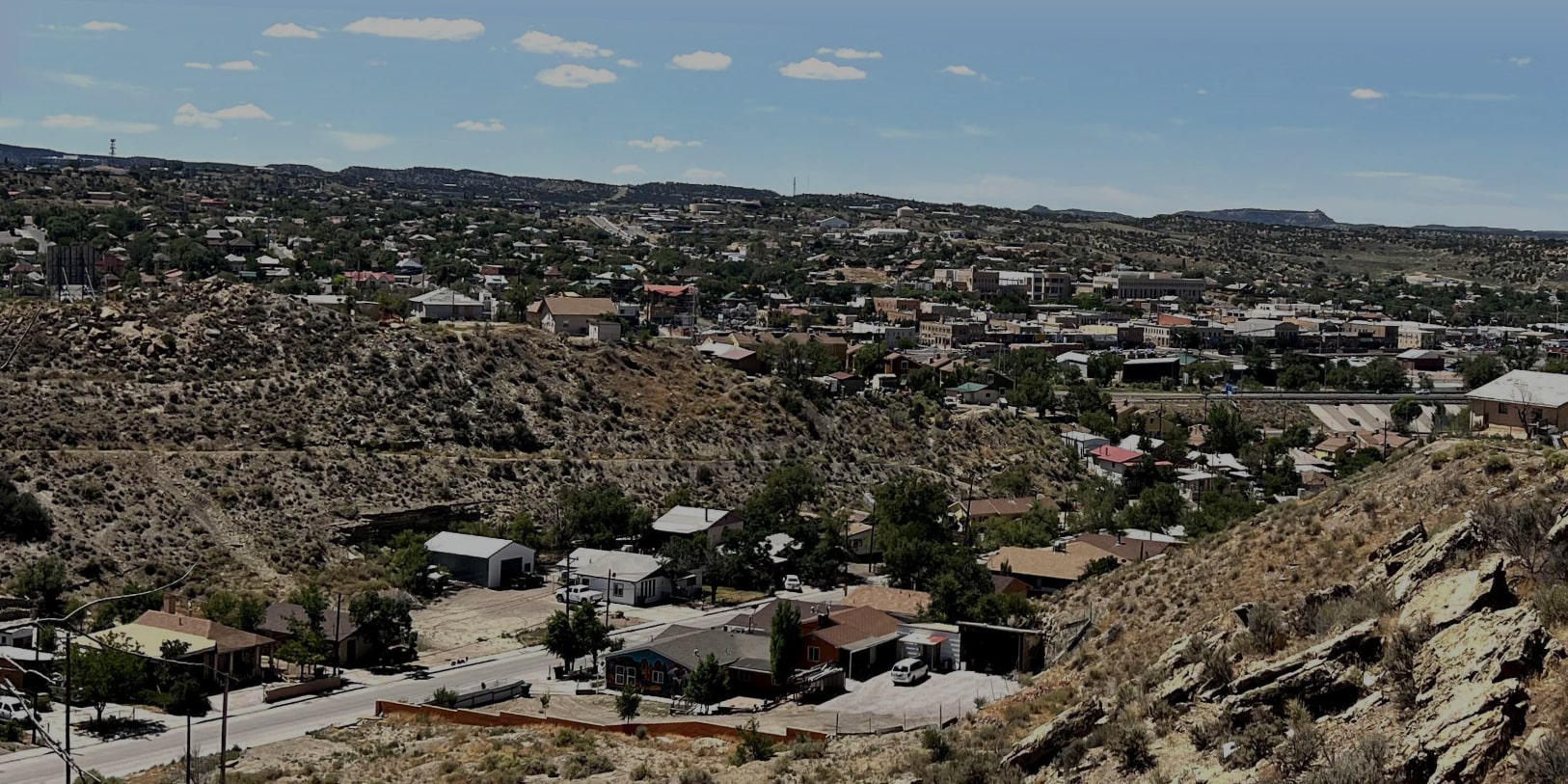


Gallup is named for David L. Gallup, the paymaster for the Atlantic & Pacific Railroad—railroad workers would say they were “going to Gallup” to collect their pay, and the name stuck.
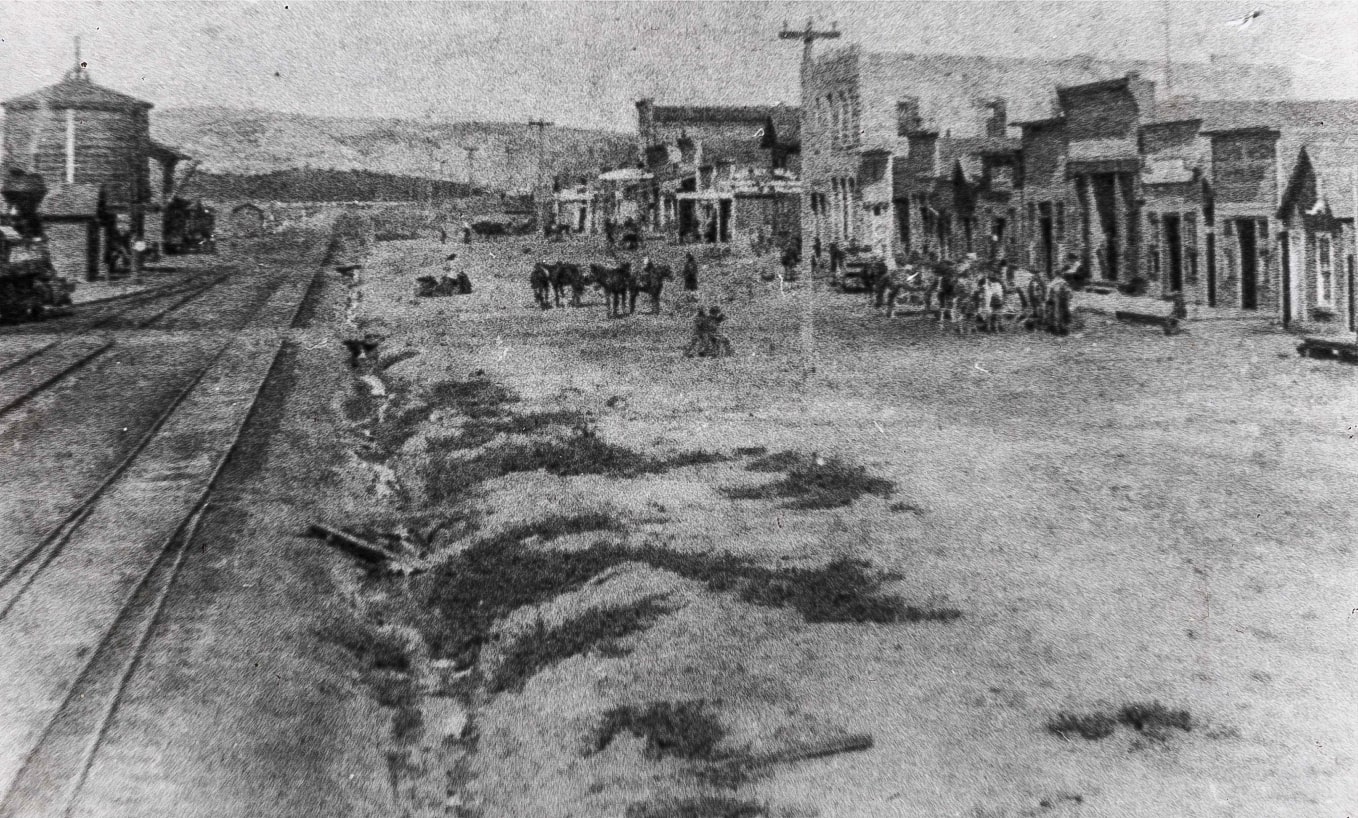
This image shows Gallup’s main drag, populated by saloons, merchants, and lodging houses, decades before sidewalks and pavement. First called Railroad Avenue, the street is now Historic Route 66. Locals continue to refer to it as “Front Street.”

By the early 1900s, twin economic booms of the railroad and coal mining had transformed Gallup’s Railroad Avenue into a bustling commercial strip of general stores, grocers, bakeries, tailors, barbers, hotels and a dozen saloons and restaurants complete with sidewalks, electricity and landscaping. Soon to come: a “moving picture” theatre and skating rink.

Clint N. Cotton built this warehouse “at a point favorably located for transportation” around 1887 to house his business, the first wholesale distribution company for Native American arts in the country with a nationwide mail-ordering system. Cotton commissioned artist Herman McNeil to create a sculpture of the famous Diné (Navajo) leader known as Chief Manuelito in 1894, a year after Manuelito’s death. Displayed in a niche above the building’s front entrance, the sculpture made the warehouse a highly identifiable Gallup landmark for railroad travelers. (The sculpture is now on public view at the McKinley County Courthouse.)

The El Navajo Hotel, pictured in this 1920s J.R. Willis photograph, opened in 1922 as a “Harvey House” hotel and restaurant attached to the Atchison, Topeka and Santa Fe Railroad train station. Designed by Mary Colter, the Fred Harvey Company’s lead architect and interior decorator, the El Navajo Hotel has been described as a “most vigorous modern statement,” and is set apart from the popular Spanish-Pueblo style of the day. To adorn the interior walls of the lobby, Colter had sand painting designs replicated in paint. The treatment of sacred spiritual designs as interior decor, a first, caused controversy.

The first McKinley County Courthouse, pictured here in the 1920s and located at the intersection of Second Street and Aztec Avenue (now the site of Gallup’s City Hall), would become the second home of the Gallup Art Center from 1939 – 1942.

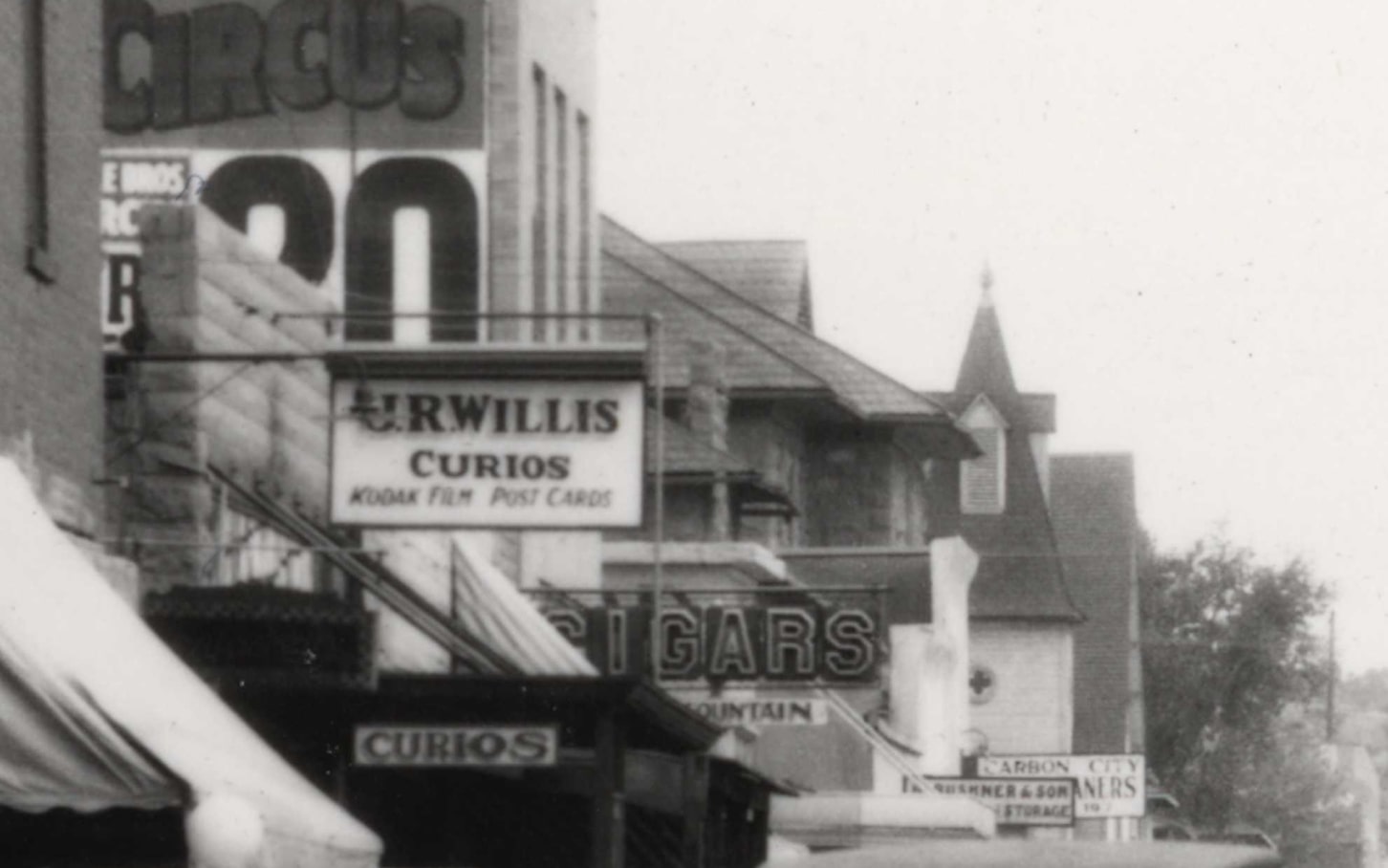
J. R. Willis, whose photography studio and shop is pictured here at its location just off of Railroad Avenue in downtown Gallup, spent 14 years from 1917 – 1931 as Gallup’s “unofficial official” photographer, producing and distributing numerous photos of landmarks, landscapes, people and events, including through his postcard production company.

This photograph of El Morro Theatre, likely taken by J.R. Willis shortly after its opening in 1928, showcases the flamboyant facade of the building, designed by the Boller Brothers in an ornate Spanish Colonial Revival architectural style to show, according to the opening night program, “photoplays, dramatic offerings, and vaudeville of the highest quality; where you could hear music that would entrance and delight you, and where novelty entertainment will reign supreme.”

By the 1920s, Gallup was a well-established, small-sized city (by the 1920 U.S. Census definition) with a population of between 4,000 and 5,500 people surrounded by several mining communities. The core commercial center had expanded to the east, south and west by a couple blocks in each direction; its streets, including Railroad Avenue (which became part of Route 66 in 1926), were paved; and—as reflected in this J. R. Willis photo—the once ad-hoc “original townsite” had developed the look, feel and function of a true downtown.

In 1920s Gallup “Street Scene,” J. R. Willis captures the dynamics of a busy railway town that had fast become a vital travel, trade, and commercial center. The C.N. Cotton warehouse was literally and figuratively at the intersection of the action, functioning as a strategically located middleman in the marketplace of Navajo weaving. The Cotton company would buy weavings from Navajo weavers and re-distribute them to consumers across the country. In turn, the weavers (often making an infrequent, days-long trip to Gallup by horse-and-buggy) would re-distribute their earnings within the Gallup economy, buying groceries and other necessities.

The El Navajo Hotel contributed greatly to the development of a tourism industry in Gallup, especially through the Fred Harvey Company’s “Indian Detour” service which promoted “cruises” through the Navajo Nation. Cruises were led by female-only guides dresses in “Navajo style”–velveteen blouses, concha belts, and squash blossom necklaces. Tourism and train travel suffered through the Great Depression and the Fred Harvey Company struggled to regain its prominence after. The El Navajo Hotel was demolished in 1957.

Gallup’s historic post office, built (and photographed) in 1933 through the Treasury Department, is a hallmark of the New Deal era, interestingly combining Mediterranean and Spanish-Pueblo architectural styles. It was originally decorated with three paintings by Warren Rollins, commissioned through the Civil Works Administration, that were described at the time as “reflect[ing] Gallup’s spirit as an Indian Capital,” showcasing a Zuni Pueblo ceremonial, a Navajo weaver, and a Hopi pottery maker.

The Gallup Art Center was housed in the original McKinley County Courthouse building from 1939 – 1942. The old courtroom was refurbished as an art gallery and extra rooms were opened to civic groups, including the Girl Scouts and Red Cross.

The historic McKinley County Courthouse was built through the Public Works Administration between 1938 and 1939. Designed by Trost & Trost architects, it embodies the then-popular but problematically simplistic tri-cultural mythology of New Mexico, which holds that the state is some to three major cultures: Anglo, Spanish, and Pueblo/Native American. The north, east, and south facades each represent one of these cultures in terms of form and style.

The El Morro Theatre has remained a prominent feature of downtown Gallup’s cityscape.

Route 66, conceived and built as the “Mainstreet of America” in the late 1920s, became “The Road of Flight” in the 1930s—a travel route for economic refugees fleeing the dust bowl and those trying to find work during the Great Depression. By the time of this picture (1941), Route 66 had been widened into a two-lane road, re-shaping “Front Street.”
Gallup’s New Deal art collection consists of over 120 objects created, purchased, or donated from 1933 to 1942 through New Deal federal art programs administered by President Franklin D. Roosevelt to support artists during the Great Depression.
The Gallup New Deal Art Virtual Museum features three types of exhibits, combining traditional and non-traditional approaches to illuminate academic, creative, and individual understandings.
Gallup’s New Deal art collection includes works by a demographically, professionally, and stylistically diverse group of named and unnamed artists.

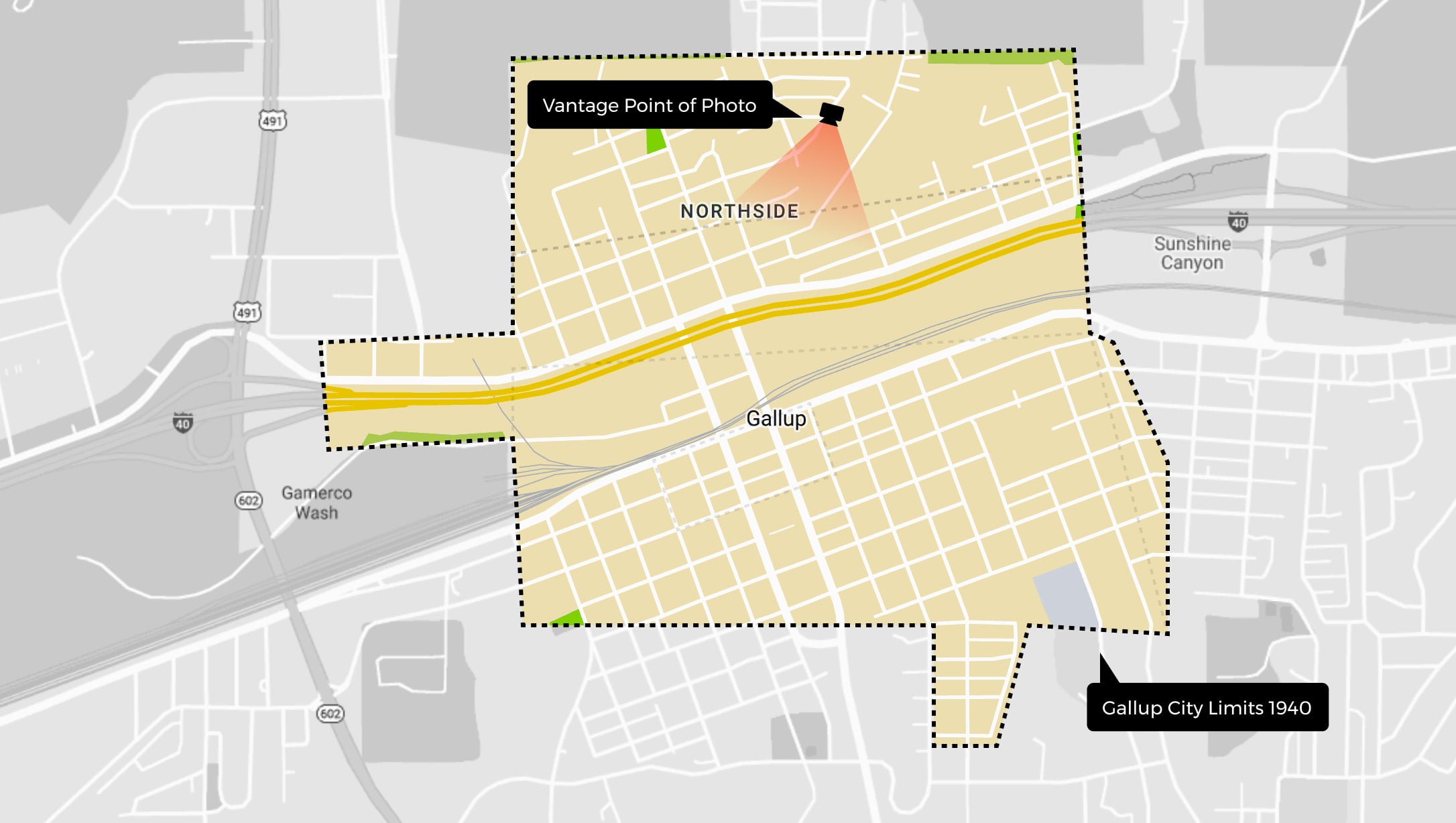



Image Use Notice: Images of Gallup’s New Deal artworks are available to be used for educational purposes only. Non-collection images are subject to specific restrictions and identified by a © icon. Hover over the icon for copyright info. Read more